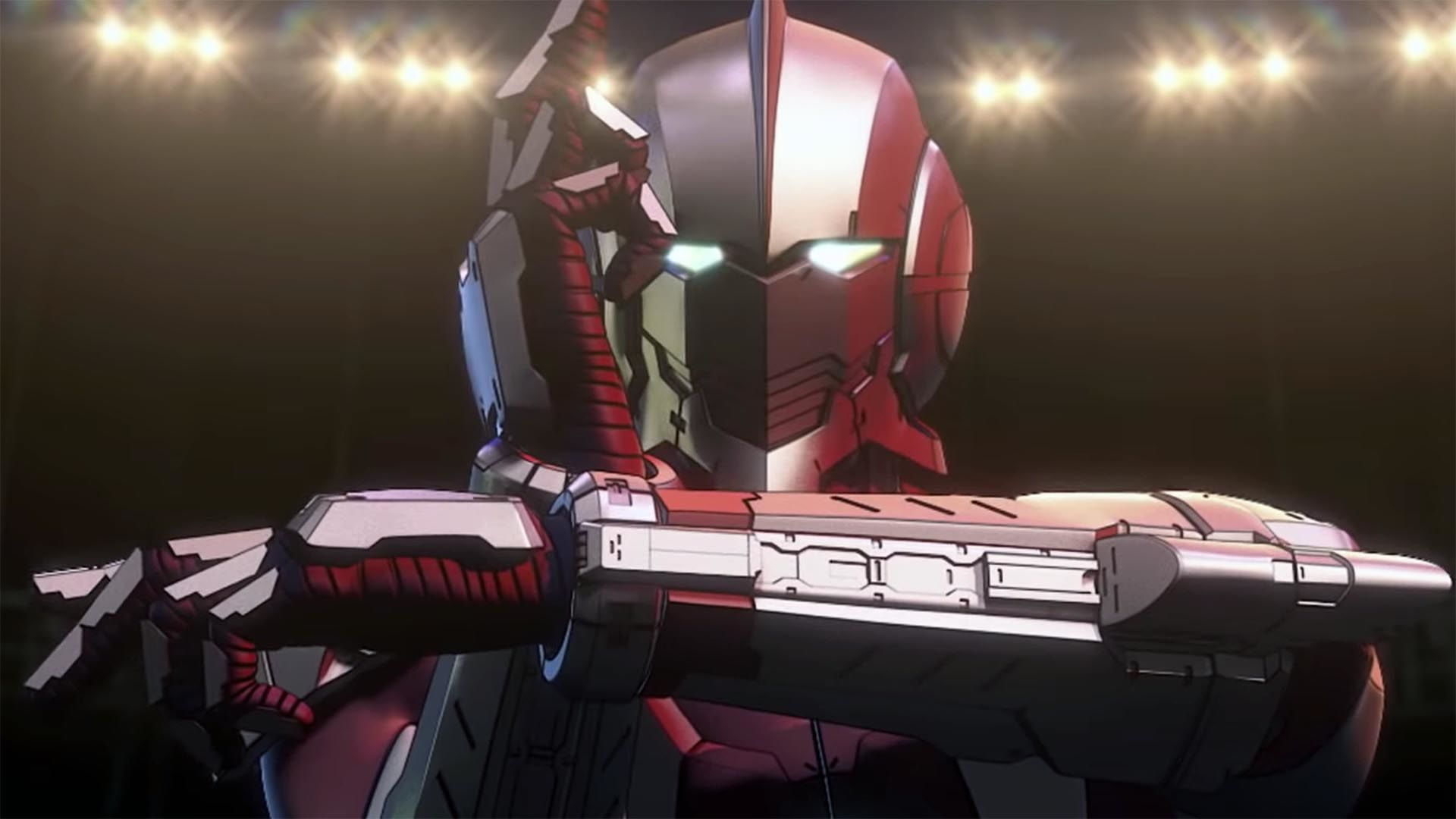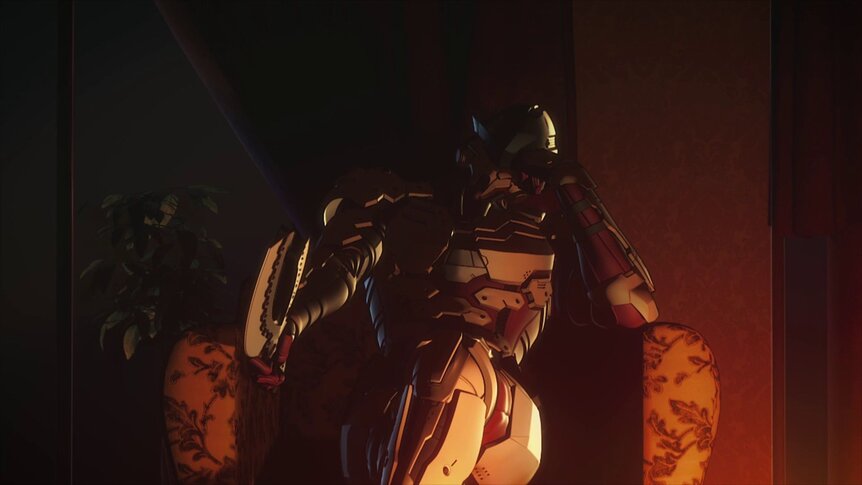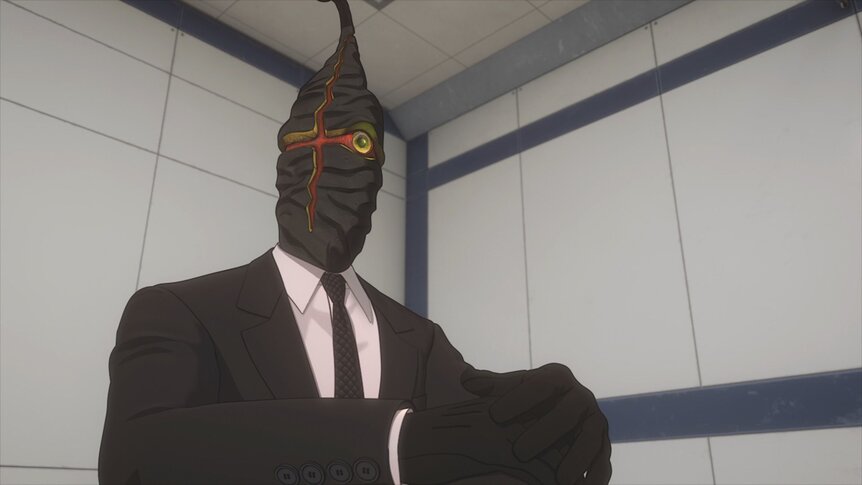Create a free profile to get unlimited access to exclusive videos, sweepstakes, and more!
A guide to Netflix's Ultraman (especially if you didn't watch the original)

Netflix's anime reimagining of Ultraman dropped this week, giving the iconic Japanese superhero a cel-shaded facelift and a whole new mythology to explore.
The Ultra Series, as it's known, has been a decades-long staple of tokusatsu television, spanning fifty years with new Ultramen, new monsters, and new stories cropping up every single year. Take just one look at the expansive Ultraman Wiki, and you'll find more lore, team-ups, and lists of power sets than you can shake a Specium Ray at.
Netflix's version, however, is a little bit different — an adaptation of the 2011 manga by Eiichi Shimizu and Tomohiro Shimoguchi, the Ultraman anime gives the superhero series a fresh start, throwing everything away but the original 1966 Ultraman series and building from there. That said, there are a few curious connections to the Ultra Series that newcomers might not pick up on. Let's take a look at how Netflix's Ultraman builds off the original series and draws from its live-action incarnations to build its new universe.
**Mild spoilers ahead for the Netflix show.**
THE ORIGINAL ULTRAMAN
In the modern-day world of Netflix's Ultraman, there's only ever been one Hero of Light, the original Ultraman, an alien from the World of Light. In 1966, he fused with pilot Shin Hayata, a member of the Science Special Search Party (SSSP), colloquially known as the Science Patrol. Together, they fought giant monsters that besieged Tokyo, Hayata growing to the size of a skyscraper and donning the red-and-gray costume of Ultraman. After defeating Zetton, the final alien to attack Earth, Ultraman left Hayata's body and returned to his world, taking all of his memories of being Ultraman with him.
This tracks with the events of the original 1966 season of Ultraman, the one part of the original mythos that still happened in this world. In the new series, Tokyo has rebuilt, the SSSP has apparently disbanded, and an Ultraman museum has been erected in his honor. Hayata has raised a child named Shinjiro (voiced in the English dub by Josh Hutcherson, surprisingly) who begins to exhibit similar Ultra-like superpowers as a teenager until he's called to action by the SSSP to take on the mantle of Ultraman.
NOT YOUR DADDY'S ULTRAMAN
Fans of the original Ultraman series might be a bit confused by the structure of this new show: Instead of a giant alien being in Spandex who can grow to the size of a skyscraper to fight giant monsters, the Ultramen of this series get their power from sleek, man-made Iron Man-like powered armor. (The show even uses the patented "close-up of the character's face around a floating HUD" approach the first Iron Man film pioneered.) What's more, there isn't a single giant monster fight to be found; Ultraman's battles are all street-level, slick martial-arts combat more akin to something like Casshern or Raiden in Metal Gear Rising: Revengeance.
That's not to say that this new Ultraman doesn't have a roster of powers similar to his beanstalk of a predecessor. The iconic Specium Ray is back; but this time, Shinjiro has to lock two connectors on either side of his gauntlets to activate it. His arms generate two arc beams along the length of his forearms he can use for defense or attack. Otherwise, this manmade suit looks and feels quite a bit like the original Ultraman, with its red-and-grey color scheme and large Color Timer crystal on the chest.
BRINGING BACK OTHER ULTRA BROTHERS
Much like Super Sentai or Kamen Rider, the original Ultra Series brought in a new Ultraman protagonist every season; while the new show erases that continuity, fans might recognize a few familiar faces. Dan Moroboshi, the hero of the 1967 series Ultra Seven, crops up in Ultraman as a stern, brooding member of the SSSP who takes the young, inexperienced Shinjiro under his wing. He's a bit of a jerk, to be honest, constantly putting Shinjiro down and telling him he doesn't deserve to wear the Ultraman suit. However, we soon learn that he's got a suit of his own, one modeled after the spikier Ultraman costume worn by his '60s counterpart.
Later in the season, we also catch a glimpse of the young, impetuous Seiji Hokuto, better known as one of the two hosts for 1972's Ultraman Ace. In the original show, he was part of a man-woman team (along with Yuko Minami) who merged to become Ultraman Ace. Here, Seiji is a mysterious classmate of Shinjiro's, who may also have an Ultra suit of his own (modeled after the bug-eyed design of the classic Ace). Determined to protect his friend Yuko, with whom he was raised in isolation under mysterious circumstances, Seiji reluctantly teams up with the SSSP to take down a group of alien mercenaries.
While he doesn't end up joining the Ultra team in Season 1, the Netflix show also throws in Jack, a human informant for the SSSP who lives in isolation in Tokyo's secret underground alien city. While his real name and origins are unknown, he wears a similar bracelet that original Ultraman Jack protagonist Hideki Go used when he transformed. Maybe we'll see him become the fourth Ultraman in Season 2?
And, of course, we can't forget the original Ultraman, Shin Hayata, who we see in a black, helmet-less Ultra suit early in the season. For a 60-year-old man fighting an armored alien from outer space, he acquits himself quite nicely.
HEROES, ALLIES, AND VILLAINS
Even if they don't grow to the size of the Empire State Building, Ultra-fans might recognize some of the monsters in Netflix's show from the original. The series' big bad is named Bemular, which is also the monster from the very first episode of Ultraman. However, while the original Bemular was a grabby, Godzilla-like lizard, this Bemular is a floating silver humanoid with suspiciously Ultra-like armor. Who could it be? (Don't worry, you'll guess pretty quickly.)
Other old monsters crop up in the new series, reimagined as human-sized baddies with their original names spelled in reverse. Where there was Ultra Q's Cicada, Ultraman has Adacic, an alien with a long tongue and mechanical pincers. Agent Dada from the original Ultraman becomes Agent Adad, and so on and so forth.
Some aliens aren't so bad, though — Yapool, the alien who cares for Seiji and builds him his own Ultra suit, is actually a benevolent version of the main antagonist of the same name from Ultraman Ace. Even a member of the aforementioned Zetton race shows up Edo as a mysterious benefactor to the SSSP. (Imagine a man wearing a slick black suit, but their head is a gooey black bowling pin with a giant red eye sticking out, and you'll have a strong impression about Edo's uncanny presence in the show.)
Netflix's Ultraman feels like a very specific consolidation of the original Ultra Series from which it's based — honoring the original series as gospel, but taking bits and pieces from the other series, putting them in a blender, and building a more streamlined universe from that. While you don't need to know anything about Ultraman to get something out of Netflix's grimmer, more serialized take on the character, these little nods will hopefully inspire new fans to take a look back at the transcendent silliness of Ultraman's extensive, Spandex-wearing history.

















